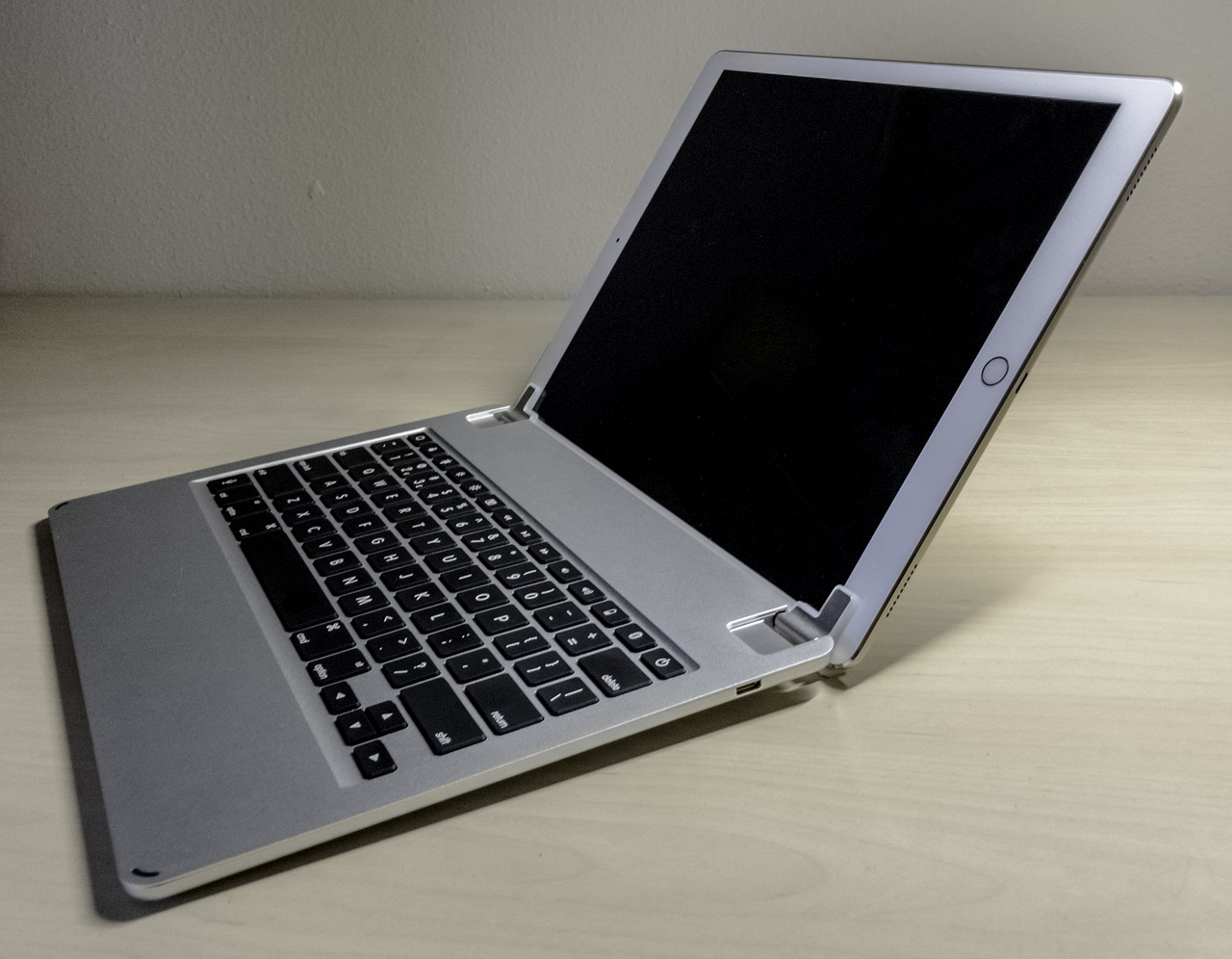Review: The Brydge 12.9 iPad Pro Keyboard
This is the first in a series of articles I’ve been working on: reviews of iPad Pro keyboards! Those of you who’ve been reading me for a long time might know that I’m a full convert to the so-called “post-PC world”. I do the vast majority of my writing and coding for AfterPad on my 12.9-inch iPad Pro, only returning to the Mac for particularly tricky web layout problems or photo editing.
Part of the reason the 12.9-inch iPad Pro is such a great computer is that unlike most laptops, it doesn’t come bolted to a terrible keyboard. The iPad can work with any style of keyboard you want, in any form-factor you want.
Much of the time I’m using my iPad Pro, it’s with a mechanical keyboard. But when I’m on the go, or working while sitting on a couch or lying in bed, a keyboard-case is necessary. I decided to put every available option I could find to the test, and try to narrow down a recommendation. This will be an ongoing series, with at least ten parts. For the first part, I wanted to start with the keyboard that was, perhaps, my most anticipated – the Brydge.

The Brydge Pro
At $189, the Brydge is the most expensive keyboard I’ll be reviewing. On paper, it seems to justify the price: backlit keys, full anodized aluminum construction, a clean and minimalist appearance, cutting-edge Bluetooth – everything you’d expect in a premium product.
The Bridge Pro has my favorite design by far of every iPad Pro keyboard I’ve used. It is the only functional keyboard that can be used equally well sitting at a desk, sitting on a couch, and lying in bed, and at the same time is easy to detach from the iPad.

Unfortunately, there are two major problems with the Brydge that make it impossible for me to recommend. First, the hinges aren’t sturdy enough. You can push the iPad Pro to approximately a 40° angle away from you; any further, and it falls back under its own weight. 40° is a decent amount for use on a desk or use lying down in bed, but it’s simply not enough to use while sitting with the keyboard in your lap.
The biggest issue with the Brydge: the keys are unpleasant to touch. They have a dry, scratchy texture to them – my fingers bristled every time I rested them on the keys. The keys appear to be constructed out of a piece of transparent plastic, with everything but the symbols painted over with a thin coat of black paint – your fingers end up rubbing against the paint layer, which doesn’t have the pleasant texture of a good piece of plastic. You see this a lot in the cheap backlit keyboards you can grab from Chinese sellers on Amazon, but it’s inexcusable in a keyboard that is positioned (and priced) as a premium product.

As much as I like the idea of the Brydge, and the overall design of the Brydge, it simply isn’t good enough. Premium construction and clever design don’t matter if the keyboard is unpleasant to use. None of the other keyboards I’ve reviewed feel as “premium” as the Brydge, but many of them are a lot more pleasant to type on, at much smaller price tags.